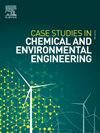在尼泊尔使用可解释的人工智能和可持续性分析探索水泥生产在GDP中的作用
Q1 Environmental Science
Case Studies in Chemical and Environmental Engineering
Pub Date : 2025-01-31
DOI:10.1016/j.cscee.2025.101128
引用次数: 0
摘要
由于需求的增加,全球水泥市场预计将从2022年的3406.1亿美元增加到2029年的4817.3亿美元。采石、原料加工和煅烧是水泥生产的步骤。印度和尼泊尔的社会必须处理环境问题,如空气污染、资源枯竭和气候变化的影响。尼泊尔Udayapur水泥工业有限公司(UCIL)的案例研究揭示了陈旧的生产方法降低了能源效率。利用回归模型,如Extra Trees(极端随机树)回归器、CatBoost(类别增强)回归器和XGBoost(极端梯度增强)回归器,随机森林和稀疏嵌入式树集合(SET)机器学习用于检查印度水泥制造业的需求、供应和国内生产总值(GDP)表现,印度与尼泊尔共享一个共同的水泥相关基础设施。由于企业了解可持续发展对吸引新客户和减少环境影响的重要性,我们的研究强调了水泥生产行业可持续实践的必要性。在评估中,Extra Trees Regressor和SET (Stacking)模型表现出了很强的性能,使用嵌套交叉验证技术进一步验证了SET (Stacking)模型。另一方面,《随机森林》遇到了麻烦;其RMSE最高(15617.85),检验最低(0.8117),说明其泛化程度较差。SET (Stacking) Ensemble模型的检验R2得分为0.9372,RMSE为9019.76。在交叉验证中,Extra Trees模型的平均交叉验证R2得分为0.93,标准差为0.04,是表现最好的模型,与其他模型相比,交叉验证R2得分的差异较小,表明其具有较高的预测性能。SHAP (SHapley Additive explanatory)可解释性分析表明,人口是影响GDP估算的主要因素。还开发了一个基于tkinter的应用程序来使用培训模型预测GDP。为了实现可持续发展并减少气候变化对水泥行业的影响,这些研究结果强调了采用尖端技术和节能程序。本文章由计算机程序翻译,如有差异,请以英文原文为准。
Exploring cement Production's role in GDP using explainable AI and sustainability analysis in Nepal
Due to rising demand, the worldwide cement market is expected to increase from $340.61 billion in 2022 to $481.73 billion by 2029. Quarrying, raw material processing, and calcination are steps in cement production. The societies in India and Nepal have to deal with environmental issues such as air pollution, resource depletion, and the effects of climate change. A case study of Nepal's Udayapur Cement Industry Limited (UCIL) exposed antiquated production methods that reduce energy efficiency. Utilizing regression models like Extra Trees (Extremely Randomized Trees) Regressor, CatBoost (Categorial Boosting) Regressor, and XGBoost (eXtreme Gradient Boosting) Regressor, Random Forest and Ensemble of Sparse Embedded Trees (SET) machine learning is used to examine the demand, supply, and Gross Domestic Product (GDP) performance of cement manufacturing in India which shares a common cement related infrastructure to Nepal. Since businesses understand how important sustainability is to attract new customers and minimizing environmental effects, our study emphasizes the necessity of sustainable practices in the cement production industry. On evaluation, the Extra Trees Regressor showed strong performance, along with the SET (Stacking) model, which was further validated using a nested cross-validation technique. Random Forest, on the other hand, had trouble; it displayed the greatest RMSE (15617.85) and the lowest testing (0.8117), suggesting poorer generalization. The SET (Stacking) Ensemble model gained a testing R2 score (0.9372) and a testing RMSE (9019.76). In cross-validation, the Extra Trees model with a mean cross-validation R2 score of 0.93 and a low standard deviation of 0.04 proved to be the best-performing model, as evidenced by lower differences in R2 score across folds compared to other models, demonstrating its high predictive performance. The SHAP (SHapley Additive exPlanations) interpretability analysis indicates that population is the primary factor influencing GDP estimates. A Tkinter-based application was also developed to forecast GDP using the training model. To attain sustainability and lessen the effects of climate change on the cement sector, these findings highlight the adoption of cutting-edge technologies and energy-efficient procedures.
求助全文
通过发布文献求助,成功后即可免费获取论文全文。
去求助
来源期刊

Case Studies in Chemical and Environmental Engineering
Engineering-Engineering (miscellaneous)
CiteScore
9.20
自引率
0.00%
发文量
103
审稿时长
40 days
 求助内容:
求助内容: 应助结果提醒方式:
应助结果提醒方式:


